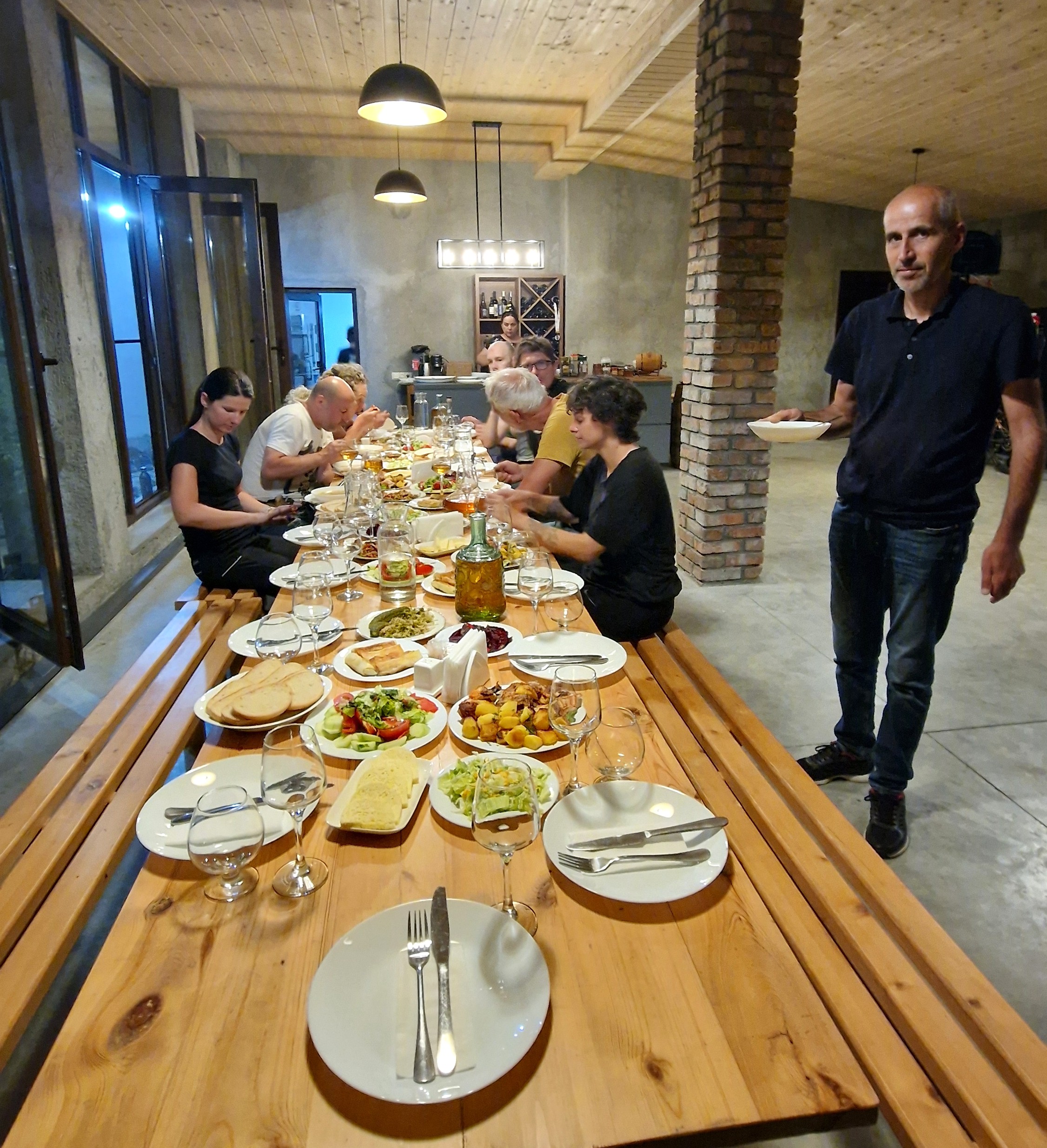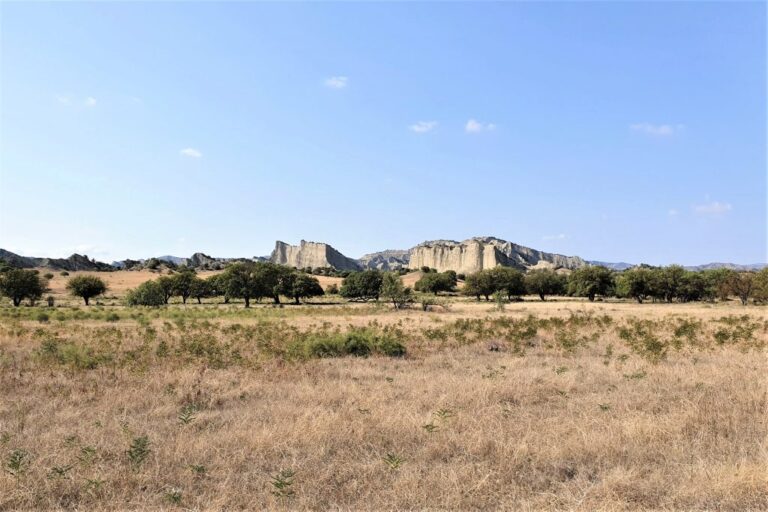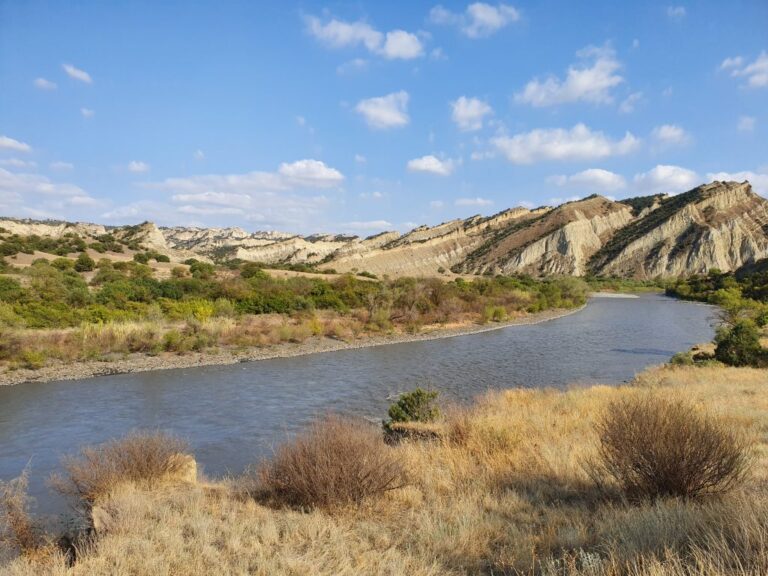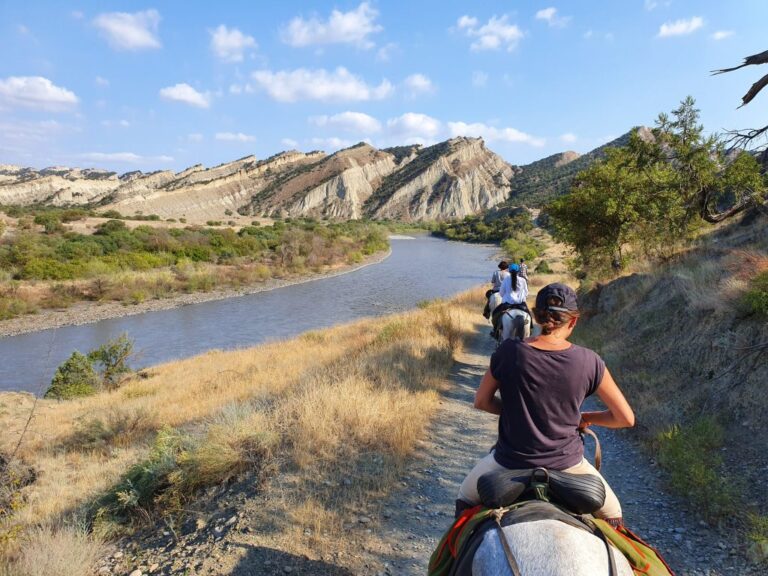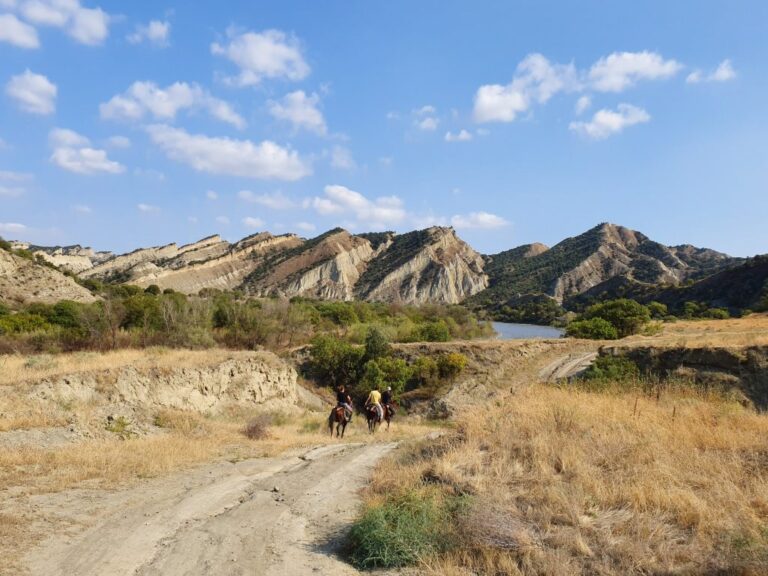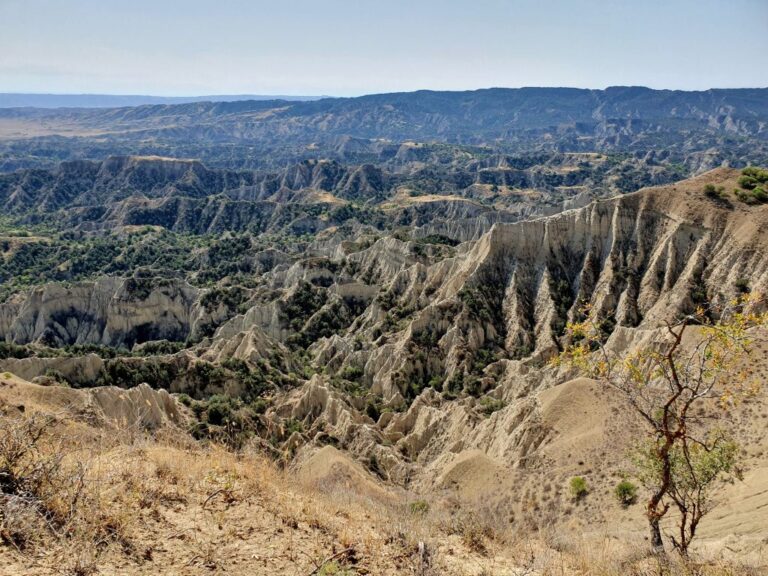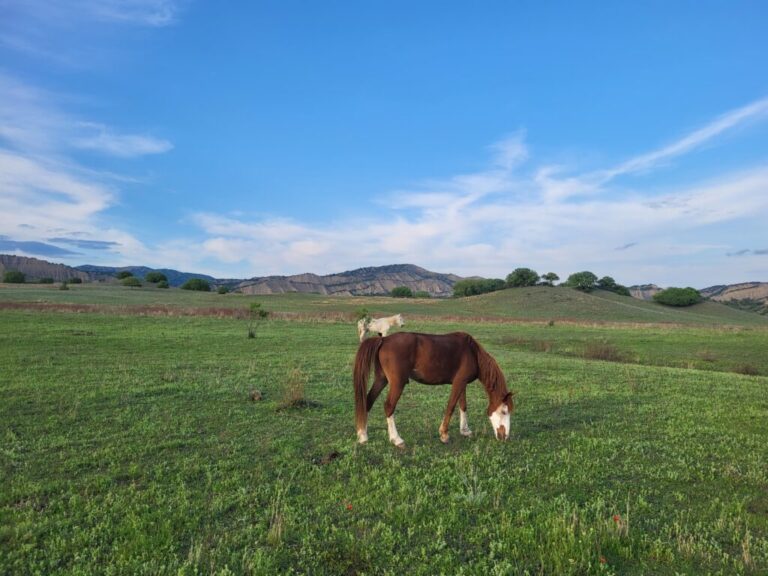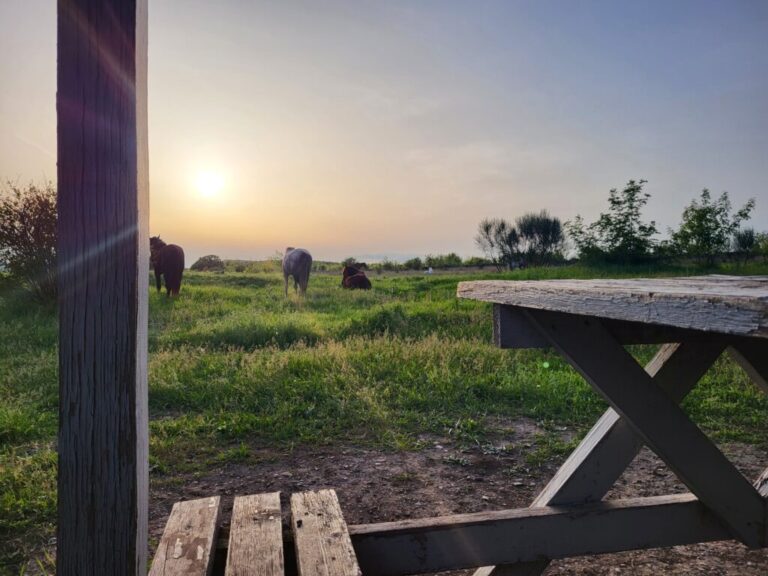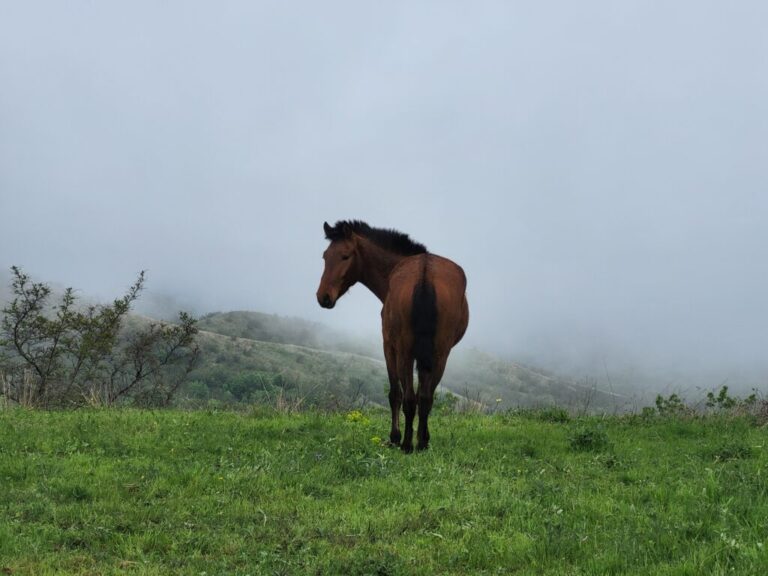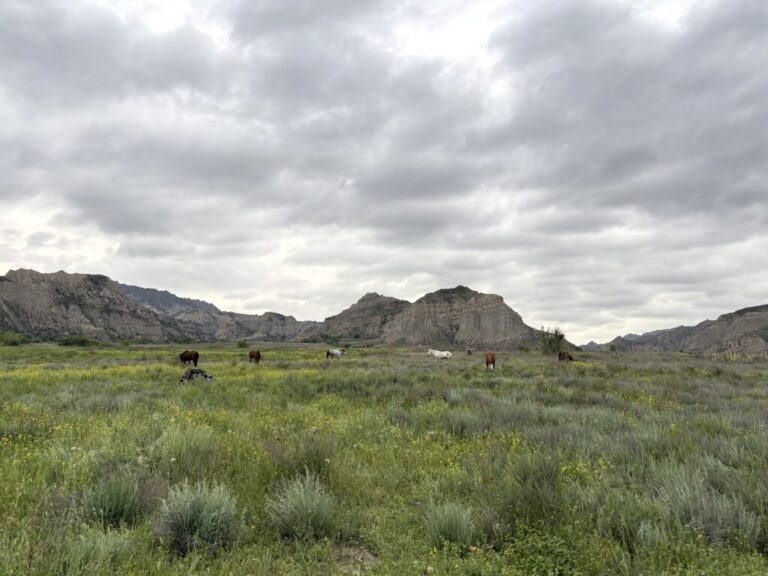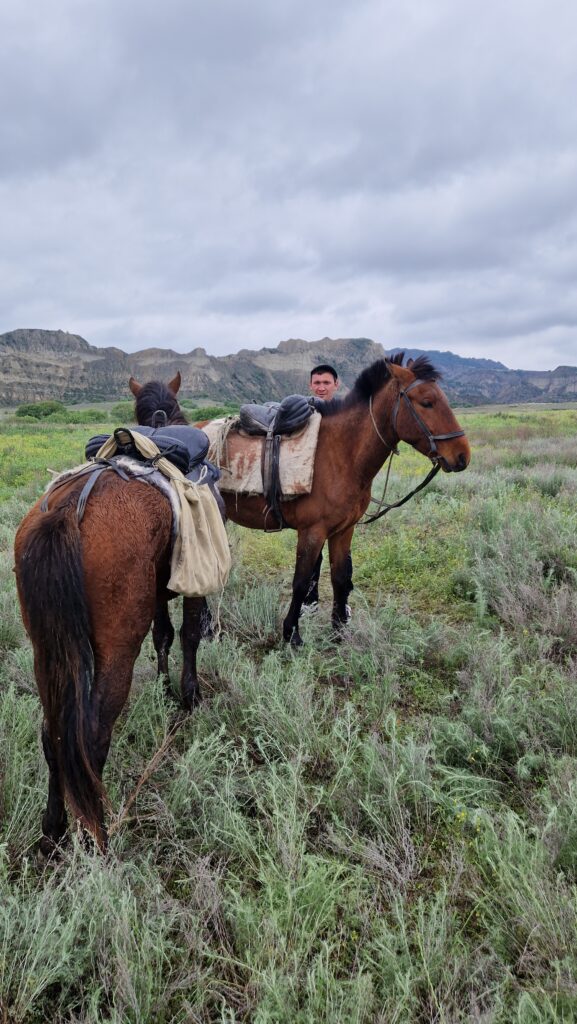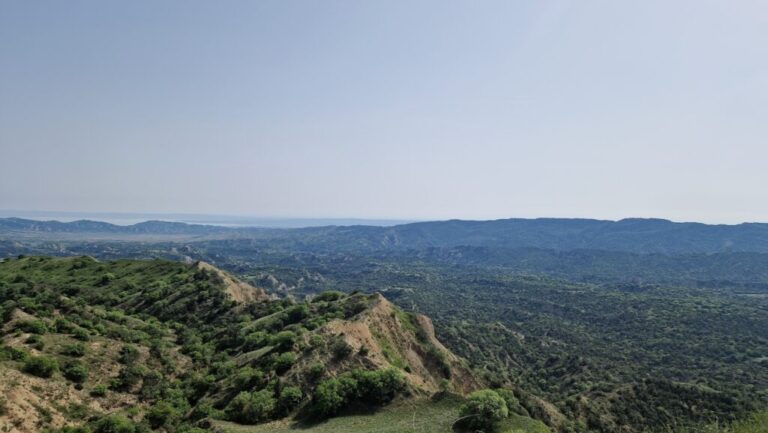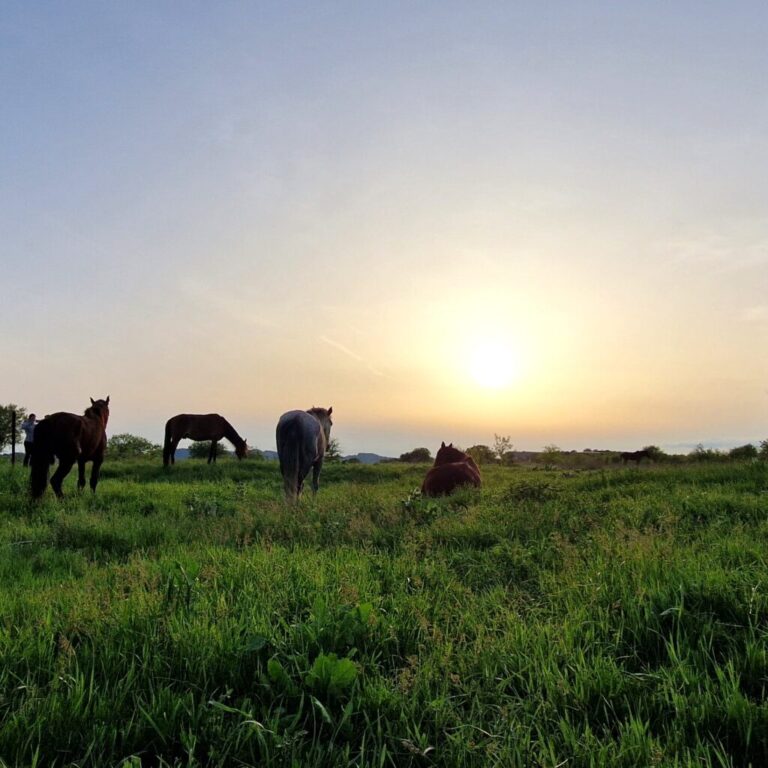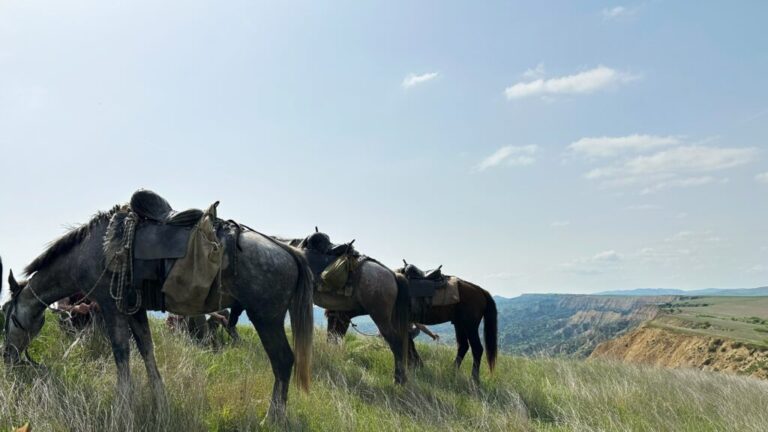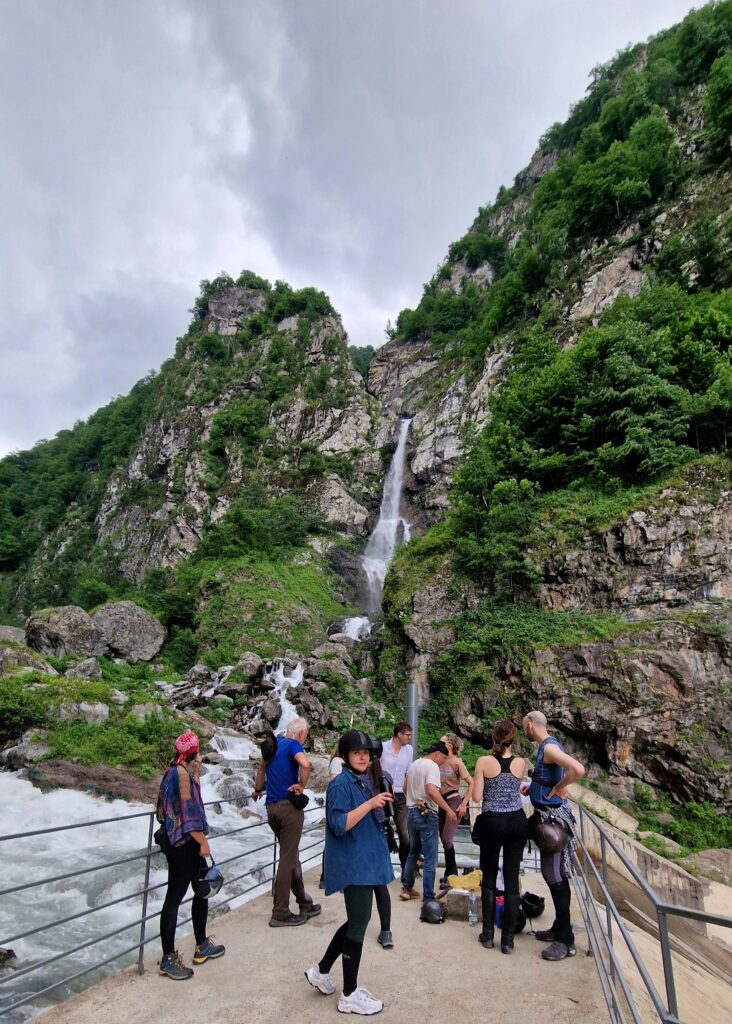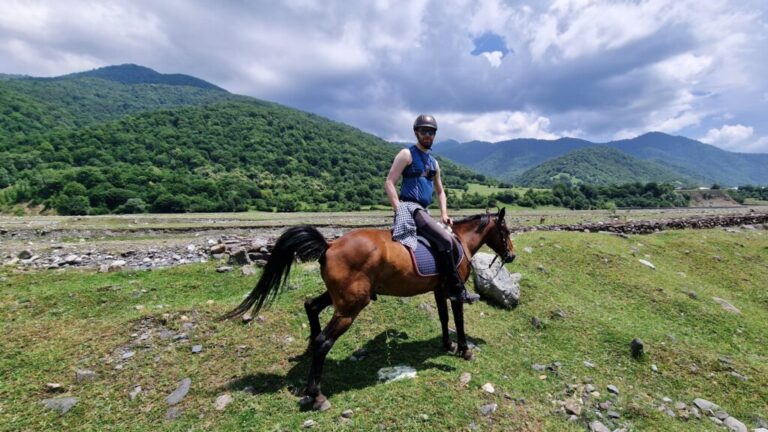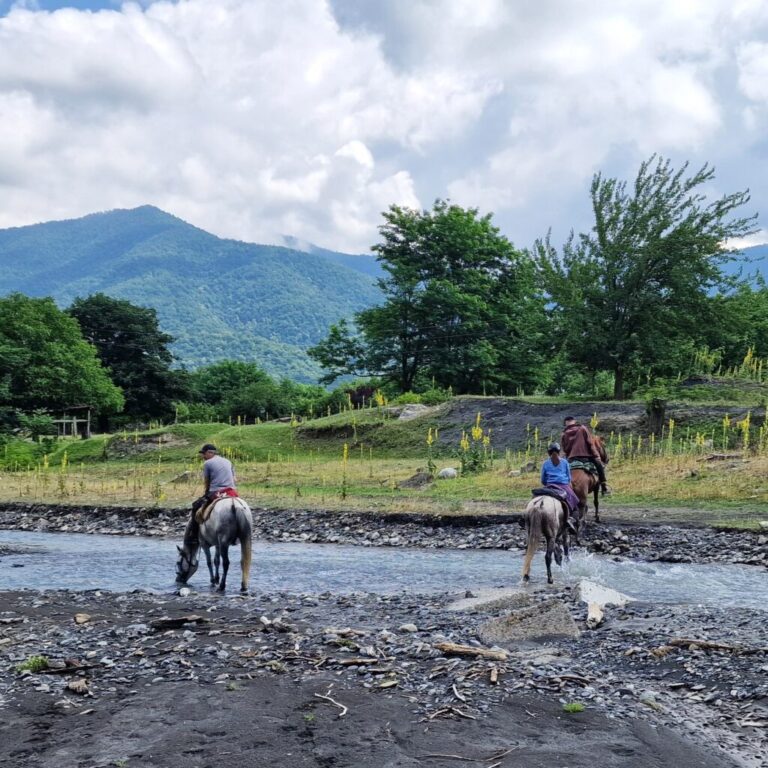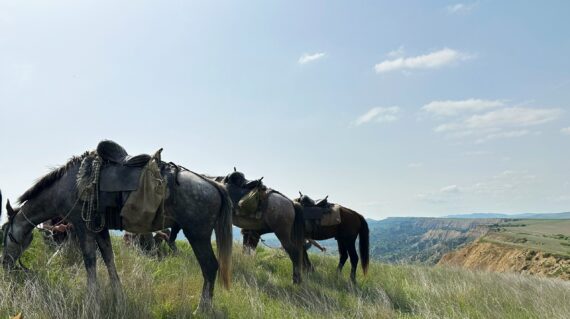
First Stripes: Pankisi and Vashlovani
Georgia
“First Stripes” programme is our original series of tours invented, designed and meant for “advanced beginners” – those of you who already ride a bit, but are not confident, solid riders (yet). We set off to two, very different from each other, regions of Georgia: Pankisi Gorge and Vashlowani National Park. In the course of this ride you will ride in some absolutely amazing places in Georgia, develop your riding skills and gather your first, “big” horse trek experience on varied routes – earn your first stripes. 🙂 This your is led by an unusual team of very experienced and evenly friendly guides: Kists from Pankisi and highlanders from Tusheti.
-
Days overall9 daysDays in saddle6 days
-
Group size10Available
-
Standardhighlanders' hospitality: under roofs, but sometimes a bit wildLuggageno limit kgFoodlocal cuisine, vegetarian meals available
-
Skillswalk, trot, canter
The First Stripes in Pankisi and Vashlani is one of the editions of our original programme for “advanced beginners”. Invented, designed and adjusted for riders, who already can ride a bit, have decent balance in the saddle, can walk, trot and started their first canters, but are not confident riders (yet).
This series of tours, scheduled from autumn to spring, takes place in two very interesting lowland sub-regions of Kakheti: Pankisi Gorge and Vashlowani National Park. This is a unique opportunity for less experienced riders who want to gain their first trail riding experience and develop their skills. The entire ride is ran by very experienced trail riding guides, leaders, horsemen and tour pilots, some of the best ones in Georgia. They will guide, teach and help you on your way to earning your first trail riding stripes.
The first two horseback riding days will be spent in the Pankisi Gorge, a valley at the foothills of the Caucasus Mountains, inhabited by the Kists, a unique subethnical group descended from the Chechen and Ingush peoples. The Kists moved to the region in the early 19th century and, along with their Georgian citizenship, they also adopted local surnames and settled for good in their new homeland. They are Muslim, mostly practising Sufism, with animistic belief influences characteristic of the whole region. At present, their total population is estimated at around 15,000 people, of whom around 8,000 live in Pankisi.
The first day of horseback riding will be a “warm-up”, getting to know the horses and a shorter (3-4 hours) ride so that everyone can get used to the Caucasian saddle and riding style. On the second day we will already set off on a longer route through the valley. The terrain is not difficult, mostly running on dirt roads and green areas, but we will also hook up with public roads in the village of Jokolo.
On the third day of the ride, we will leave Pankisi and head to the village of Kvemo Alvani on horseback. The route passes through fields, a river and a forest, as well as several villages on the border between the areas inhabited by the Kists and the Tushetians. Alvani is inhabited by the Tushetians, who spend part of the year in high mountain region of Tusheti and the remaining months in the villages of Kvemo Alvani and Zemo Alvani. This part of lowland Kakheti began to be settled by them in greater numbers in the 16th century, and two centuries later – in recognition of their service to the kings of Kakheti – they were granted the land where they still live today.
On another day, we will swap the live horses for mechanical ones, go exploring the area and visit some local winerias. Kakheti is considered the homeland of wine, and there is no shortage of vineyards and wineries in the area. Some of the wines produced in the region can easily be bought in Europe, while others are produced in small quantities and can only be enjoyed locally.
After a one-day break, we will spend the next three days in the Vashlovani National Park, a unique natural area with some extraordinary landscapes. Vashlovani is somewhat reminiscent of the African savannah, semi-desert in some places, as well as steppe areas and so-called bad lands. In spring, Vashlovsni awakens to life and becomes a vast, green area, while in autumn it turns into a golden savannah. In summer, the region is not suitable for horse riding – temperatures often reach 50 degrees Celsius. The region is entirely a national park and partly protected and strictly protected areas, representing a natural rarity on a European scale. From late autumn to spring Tusheti shepherds and their flocks stay for the winter in the park’s buffer zone.
This edition of First Stripes is jointly led by an unusual team: our friends, guides and horsemen from Pankisi and Tusheti.
The daily parts vary greatly in terms of time in the saddle. Some days will take 3-4 hours, on other days we will spend between 4 and 6 hours in the saddle. We have also planned a bit of sightseeing as part of the tour: in Tbilisi, the Pankisi Gorge and – above all – in lowlang Kakheti around Kvemo Alvani.
The First Stripes are designed for those of you who already ride “some”, i.e. are reasonably comfortable in the saddle, can walk and trot on horses and are at the stage of their first canters and have already started to go to their first, short open-terrain rides. This formula is also perfect for those who have returned to riding after a long break and have already resumed trainings, and those of you who want to go to your first tour but do not yet feel completely confident in the saddle.
For the First Stripes tours we strongly recommend riding in helmets.
- 2 nights in a hotel in Tbilisi
- 2 nights in a guesthousein Pankisi
- 2 nights in a guesthouse in Kvemo Alvani
- 2 nights in bungalows in the Vashlovani National Park
- Breakfasts in Tbilisi
- All meals in w Pankisi, Kvemo Alvani and Vashlovani (breakfast, lunch or food “to go”, dinners)
- Transfers from and to Tbilisi airport (on arrival and departure days)
- Transport from Tbilisi to Pankisi, from Kvemo Alvani to Vashlovani and from Vashlovani to Tbilisi
- Local guides and horsemen from Pankisi and Tusheti
- English-speaking pilot during the entire tour
- Horse with full tack and equipment
- Luggage car from Pankisi to Alvani, assisting vehicle in Vashlovani
- Tourist insurance covering high-risk sports
- Bilet lotniczy do i z Tbilisi/Kutaisi (poza sezonem turystycznym i w promocji bilety w dwie strony można kupić w granicach 1200 zł)
- W Tbilisi: posiłki inne niż śniadania (potężny posiłek w restauracji to koszt około 80 zł)
- Wydatki własne (pamiątki, dodatkowe przekąski, bilety wstępów itp.)
- Opcjonalnie: dopłata do pokoju jednoosobowego (tam, gdzie to możliwe)
- Day 1 Welcome to Georgia
- Day 2 Road to Pankisi
- Day 3 Khadori waterfall
- Day 4 Lowland Tushetian villages
- Day 5 Wineries in Kakheti
- Day 6 Vashlovani National Park
- Day 7 Border with Azerbaijan
- Day 8 Last day in the saddle
- Day 9 Farewell to Georgia

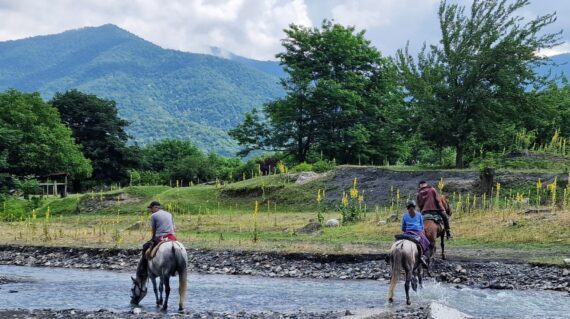
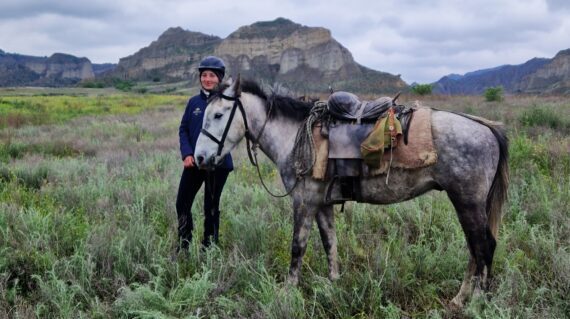
In Tbilisi we spend the night in a hotel of European standard. In Pankisi our base is a guesthouse in the village of Jokolo, where we stay for two nights. We don’t need sleeping bags or sleeping mats, we spend nights indoors, in beds. We have access to shared bathrooms and electricity there. Another 2 nights are spent in a guest house in Kvemo Alvani, also in comfy conditions, with access to shared sanitary facilities and electricity. In Vashlowani we spend two nights at Park Rangers’ stations, in bungalows. Riders will need sleeping bags there. Usually, apart from cases of supply failures (it’s a wild nature reserve, afteral), there’s access to water in both Ranger stations we stay at. In case there’s not our team also has an emergency supply of water and a portable shower bag so everybody can dust off and wash after a day in the saddle.
In Tbilisi we have breakfasts at the hotel (on the second and last day). The remaining meals in Tbilisi (i.e. dinner on the first and penultimate day) are to be purchased on your own, with everybody chipping in (wine’s on us!). In the course of the actual tour, in both regions and during transition between them all meals are provided: in the guest houses meals are prepared by the hosts, and in Vashlani by our tour team. Breakfasts and dinners are always served at the place of accommodation, and lunches – depending on the day – in the guest houses or we get a take-away meals and eat them during breaks.
Meals in Pankisi, lowland Kakheti and Vashlani are a mix of traditional Georgian dishes, with a touch of local specificity. Georgian cuisine is rich and varied: plenty of vegetables, mutton, beef and poultry, local cheeses in every form, flour dishes and bread. In Tbilisi restaurants offer both typical Georgian cuisine, as well as dishes from all over the world.
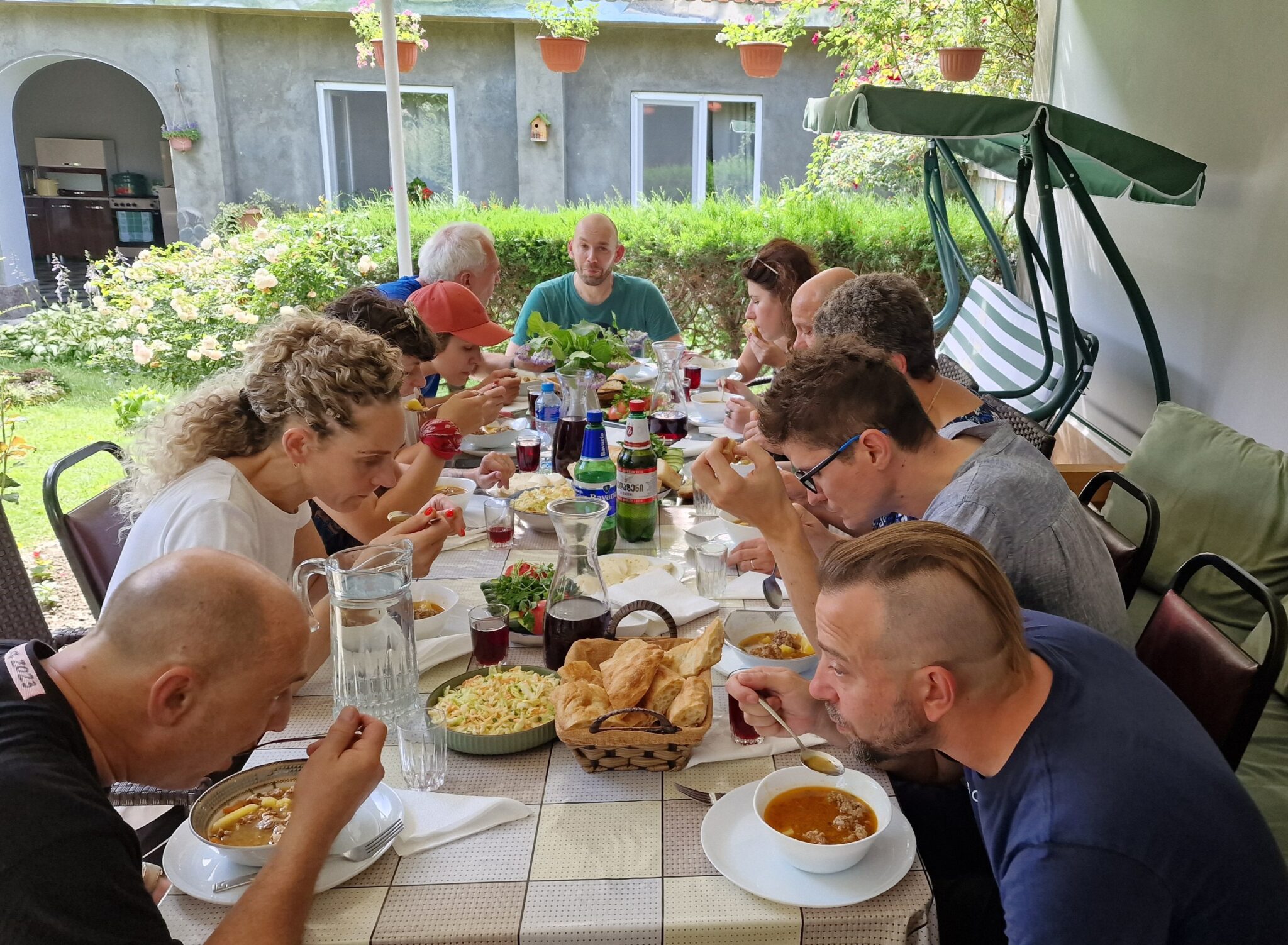
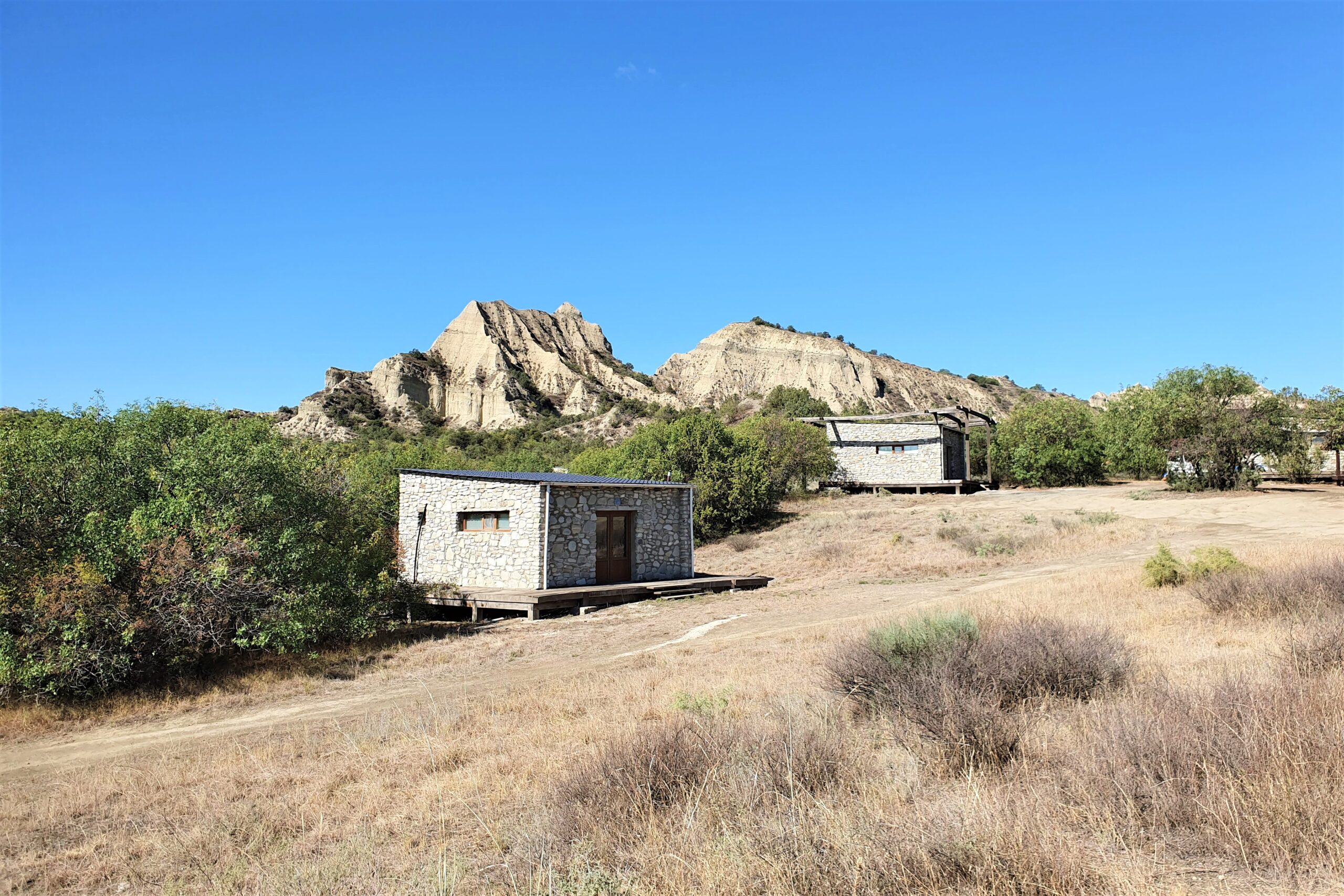
Equipment
We use typical Caucasian saddles. In construction and appearance they are noticeably different from English and Western saddles. Steel frame is set on wooden benches with a rather thick, soft leather seat placed on top. It is held in place by a set of leather straps and belt, which also serves as a girth. Tail docks and breastplates are common, bridles are build in a typical way, we use bits.
The Caucasian saddle often raises doubts at first with its unusual appearance, but in practice it is very comfortable. It stabilizes the rider very well and the thick seat absorbs shocks and bumps. The design, as it’s a shepherding saddle, is also perfect for carrying lots of luggage. Anyone who has ridden in such a saddle for a few days remembers it fondly.
Georgians ride on long stirrup belts, have a specific position in the saddle and usually stay in full sit, which resembles more western style than classical English riding style. Stirrups are relatively wide allowing trekking boots to fit easily.
Each rider is equipped with saddle bags that easily fit a jacket/raincoat, a bottle of water or some other, handy items.
Riding helmets are available on site by prior arrangement, although we recommend having your own sports helmet that perfecty fits your head.
What you should take with you
The routes in Pankisi and Vashlowani are very varied. In Pankisi and lowland Kakheti we ride through inhabited areas, while in Vashlowani we travel through desolate, wild areas of the national park and nature reserve. We ride “lightweight”, taking only what we will need for the days’ rides.
We will send out a detailed gear and equipment list, with our advice and commentary, to all participants one month ahead of the tour.
- passport
- cash, USD or EUR
- electronic devices, e.g. camera, chargers
- a handy waistbag (for documents, phone, cash, etc.)
- a canteen or other water containers (it might be an empty plastic bottle)
- flashlight; head flashlights are quite handy
- sunscreen
- head cover against the sun
- trekking shoes, waterproof ones advised
- warmer clothes for chilly days / colder nights
- raincoat / waterproof jacket
- flip-flops for showering
| Date | Trip Status | Price | Spots | |
|---|---|---|---|---|
28 November 2025 - 6 December 2025
|
Available, English-speaking pilot and guides |
1200 € |
5 |

